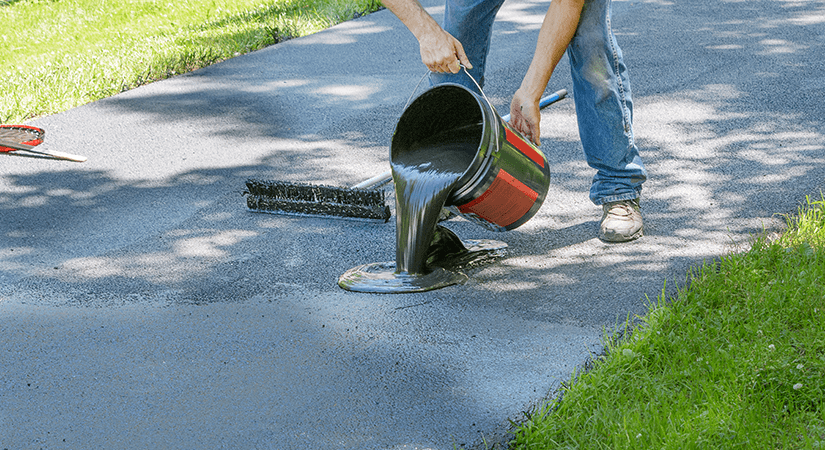Cold Mix Asphalt Vs. Hot Mix Asphalt: Which Is Right for You?

Structure Distinctions
Cold mix asphalt is created by emulsifying the asphalt binder with water and an emulsifying representative before mixing it with aggregate. The hot mix asphalt manufacturing procedure entails warming the accumulation and asphalt binder separately before integrating them at the asphalt plant.
In addition, cool mix asphalt often tends to be less dense and much more flexible than hot mix asphalt. This versatility makes it far better matched for locations with greater levels of activity, such as driveways or roads with heavy website traffic. On the other hand, warm mix asphalt is known for its high longevity and resistance to rutting and cracking, making it a recommended selection for freeways and high-traffic roadways where long life is critical.
Installment Refine Variations
The procedure of mounting chilly mix and warm mix asphalt exhibits significant variances in their procedures and demands. In contrast, warm mix asphalt demands an extra intricate installation process. Due to the home heating requirements, hot mix asphalt installments are usually lugged out by professionals with specific equipment, ensuring a more structurally audio and irreversible result.
Toughness and Long Life Factors
When considering asphalt choices, toughness and durability are critical elements to evaluate for long-term pavement performance. Hot mix asphalt (HMA) is known for its extraordinary sturdiness and longevity.
In regards to durability, HMA normally exceeds CMA due to its premium stamina and resistance homes. HMA sidewalks have a longer solution life, requiring less constant fixings and upkeep, which can convert to set you back financial savings in the future. In addition, HMA pavements are more quickly personalized to satisfy specific job demands, additionally enhancing their longevity.
Expense Factors To Consider
Considering the monetary ramifications is a critical facet when evaluating the option in between warm mix asphalt (HMA) and cool mix asphalt (CMA) for sidewalk tasks. While the first price of warm mix asphalt is commonly greater than that of chilly mix asphalt, HMA frequently supplies a much more affordable option in the lengthy run due to its remarkable toughness and long life.
In addition to product costs, it's crucial to think about the expenses linked with installation and upkeep when contrasting HMA and CMA. Eventually, the decision between HMA and CMA need to take into account not simply the first expense yet also the lasting financial implications to establish the most affordable alternative for the specific pavement task.
Environmental Effect Contrast
Comparison of the environmental impacts in between warm mix asphalt Continued (HMA) and cold mix asphalt (CMA) reveals unique differences in sustainability methods. HMA production needs high temperatures, see this website leading to enhanced energy consumption and greenhouse gas emissions.
Furthermore, making use of CMA usually includes reusing existing asphalt pavement, promoting resource preservation and decreasing the amount of waste sent to land fills. This reusing facet further enhances the sustainability of CMA contrasted to HMA. On the whole, when thinking about the environmental influence, CMA arises as a much more ecologically sustainable choice because of its lower power needs, reduced discharges, and the possibility for reusing existing products. By going with CMA over HMA, roadway building and construction projects can contribute positively to ecological conservation efforts.
Conclusion
To conclude, the option between cool mix asphalt (CMA) and warm mix asphalt (HMA) depends upon various variables such as read here structure, installation process, toughness, longevity, cost, and environmental influence. cold mix asphalt. While CMA uses a fast and affordable solution for small fixings, HMA makes sure superior sturdiness and longevity for heavy website traffic areas. Take into consideration these elements carefully to figure out which sort of asphalt is the right option for your paving requires

Thinking about the economic ramifications is a crucial aspect when reviewing the choice in between hot mix asphalt (HMA) and cold mix asphalt (CMA) for pavement projects. While the first cost of hot mix asphalt is usually higher than that of chilly mix asphalt, HMA usually offers an extra economical solution in the long run due to its superior resilience and durability. angle parking.Comparison of the environmental effects in between hot mix asphalt (HMA) and cool mix asphalt (CMA) reveals distinct differences in sustainability methods.In final thought, the choice between cold mix asphalt (CMA) and hot mix asphalt (HMA) depends on different aspects such as make-up, installation process, sturdiness, long life, price, and ecological influence